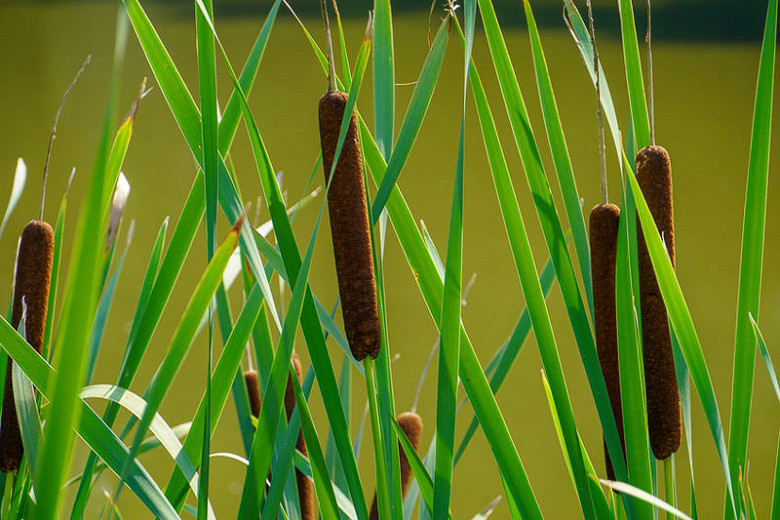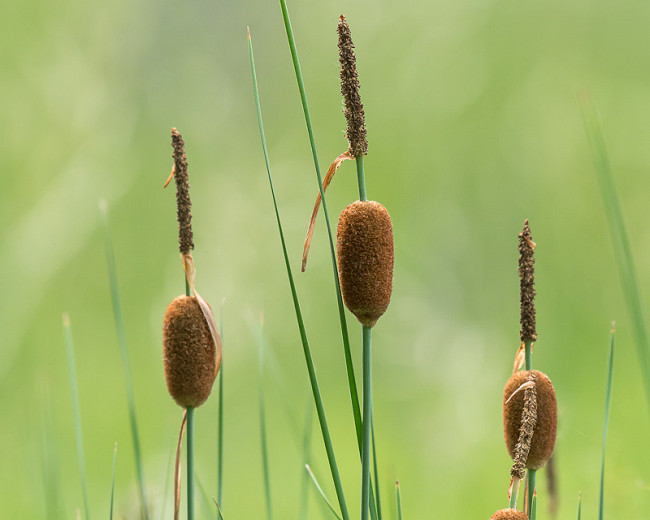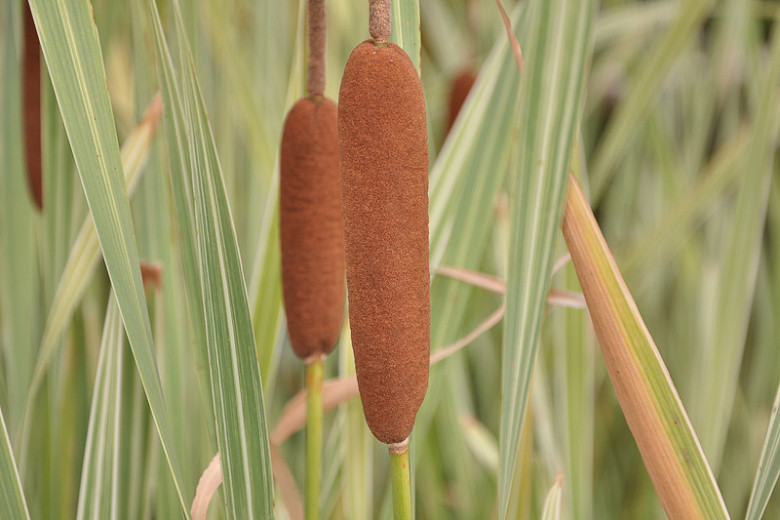Typha laxmannii (Graceful Cattail)
Typha laxmannii (Graceful Cattail) is a vigorous, marginal aquatic perennial forming a dense clump of narrow, upright, gray-green leaves that grow up to 5 ft. tall (150 cm) in a sword-like shape. The linear foliage turns golden brown in the fall. In summer, the plant bears cylindrical inflorescences composed of tiny male, staminate flowers in the upper portion and female, pistillate flowers below. In this species, the staminate and pistillate flowers are separated by a gap of up to 2 in. (5 cm) of the stalk. The male flowers are golden yellow at the time they shed their pollen, then they disintegrate, leaving a naked stalk tip. The densely packed female spike turns from green to rich brown as the seeds mature. The fertilized flowers produce single-seeded, nutlike achenes with long, slender hairs that allow for wind and water transport of the seeds. The fruiting spikes usually persist to early winter before disintegrating. They are widely popular for cut flower arrangements. Graceful Cattail has creeping rhizomes that spread to form dense colonies in shallow water. It provides a favorable habitat for birds and other wildlife. Native Europe and Asia, Graceful Cattail occurs naturally in shallow water on the margins of pools and ponds. Graceful Cattail is aggressive and should not be introduced without thought as to how to control it. Site plants carefully because the roots go deep and are hard to eradicate once established.
- Grows up to 3-5 ft. tall (90-150 cm) and 18-36 in. wide (45-90 cm).
- Performs best in full sun to part shade in shallow water, 12 in. deep (30 cm). Outside of containers, rhizomes can spread rapidly to form colonies when happy.
- No serious pest or disease issues.
- Propagate by root division or by seed.
- Native from Europe through Siberia, the Middle East, the Caucasus, the Himalayas in Pakistan, Kazakhstan, and Mongolia to the Russian Far East, China, and Japan.
- Find where Typha laxmannii is invasive in the U.S.
Requirements
| Hardiness | 4 – 10 |
|---|---|
| Plant Type | Aquatic Plants, Perennials |
| Plant Family | Typha – Cattails |
| Exposure | Full Sun, Partial Sun |
| Season of Interest | Summer (Mid,Late)FallWinter |
| Height | 3' – 5' (90cm – 150cm) |
| Spread | 1' – 3' (30cm – 90cm) |
| Spacing | 36″ – 48″ (90cm – 120cm) |
| Water Needs | High |
| Maintenance | Average |
| Soil Type | Clay, Loam |
| Soil pH | Acid, Alkaline, Neutral |
| Soil Drainage | Poorly Drained |
| Characteristics | Showy |
| Tolerance | Wet Soil |
| Attracts | Birds |
| Garden Uses | Ponds and Streams, Rain Gardens, Water Gardens |





